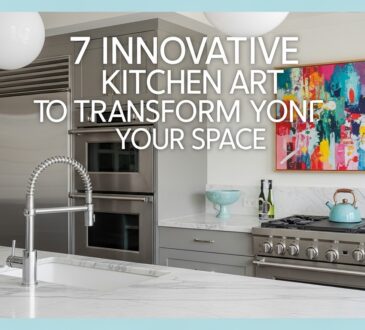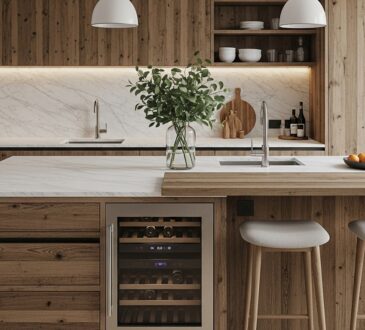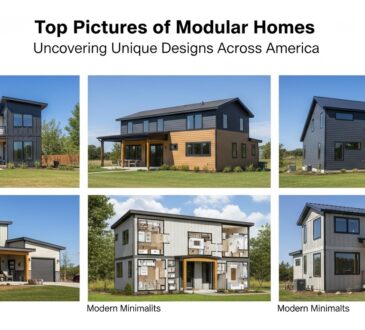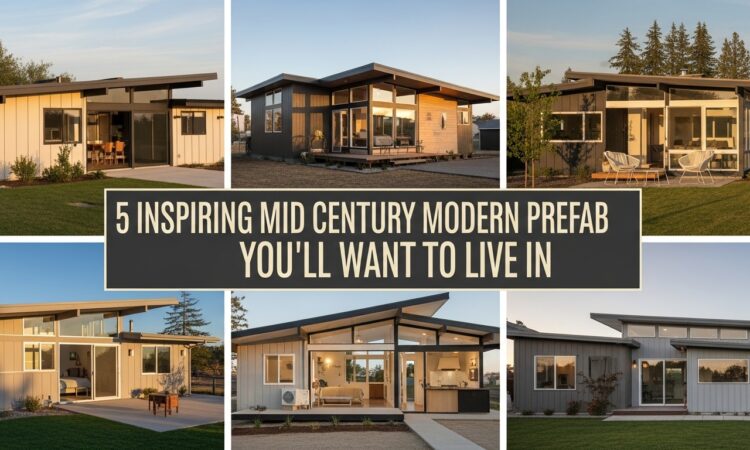
5 Inspiring Mid Century Modern Prefab Homes You’ll Want to Live In
The clean lines, organic forms, and seamless connection to nature that define Mid-Century Modern architecture have captured the hearts of design enthusiasts for decades. This timeless style, born from an era of optimism and innovation, feels just as fresh and relevant today as it did in the 1950s and 60s. Now, paired with the cutting-edge efficiency of prefabricated construction, mid century modern prefab homes are emerging as a perfect solution for those who crave classic design without the lengthy, complex, and often costly process of a traditional custom build.
This article delves into five inspiring examples and archetypes of prefabricated mid century modern homes, showcasing how this iconic aesthetic is being reimagined for a new generation of homeowners in the United States.
The Allure of Mid Century Modern Design
First, what makes Mid-Century Modern (MCM) so enduringly popular? It’s a design philosophy that champions simplicity and function. Characterized by flat or butterfly rooflines, large glass windows, and open-concept interiors, MCM architecture was designed to erase the boundaries between indoors and out. It celebrates natural materials like wood, stone, and glass, creating spaces that feel both warm and uncluttered.
Pioneered by visionaries like Charles and Ray Eames, Richard Neutra, and Joseph Eichler, this movement was about more than just looks; it was about creating a better, more democratic way of living. The furniture and homes were designed for real families, emphasizing comfort, functionality, and an appreciation for the surrounding landscape. This inherent warmth and thoughtful design are what continue to draw people to the MCM aesthetic today, offering a stylish retreat from the complexities of the modern world.
Why Choose Prefab Homes?
Prefabrication, or prefab, is a method of construction where components of a house are built off-site in a controlled factory environment and then transported to the property for assembly. This modern approach offers several compelling advantages over traditional on-site construction.
Firstly, building in a factory leads to faster construction timelines and significantly less material waste, making it a more sustainable option. Secondly, the controlled environment allows for higher precision and quality control, ensuring every component is built to exacting standards. Finally, this efficiency often translates into more predictable costs and, in many cases, a more affordable final price tag. When you combine these modern efficiencies with the timeless appeal of MCM design, you get the best of both worlds: a beautifully designed, high-quality mid century modern prefab house built for the future.
House #1: The Iconic Eichler Home
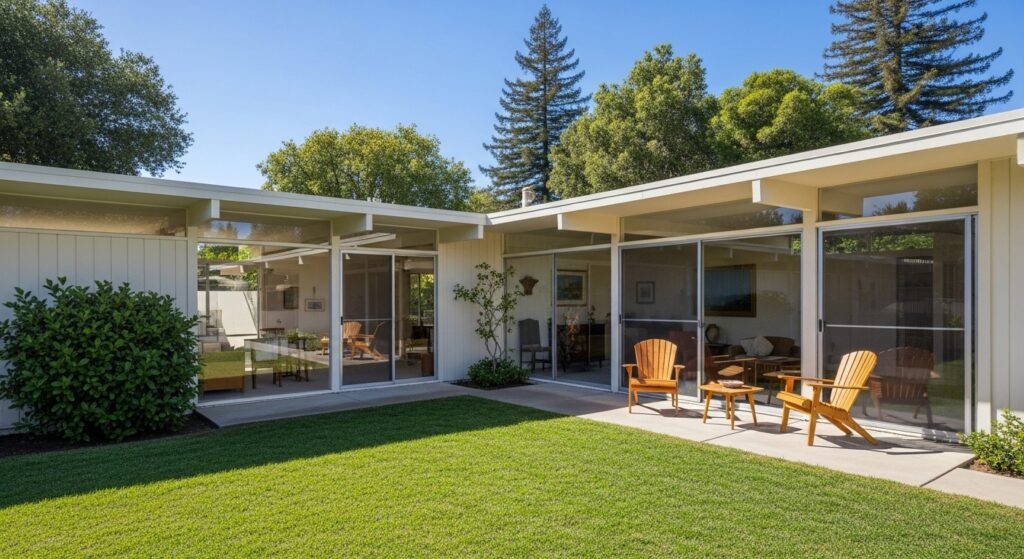
To understand the modern appeal of the mid century prefab homes movement, one must first look to the past and the groundbreaking work of Joseph Eichler. His iconic homes set the standard for accessible modern living in post-war America.
Historical Significance
Joseph Eichler was a real estate developer, not an architect, who was inspired by a Frank Lloyd Wright Usonian home. Between the late 1940s and the 1960s, his company built over 11,000 homes, primarily in California. These “Eichlers” brought the core tenets of modern architecture—once reserved for wealthy clients—to the suburban middle class. He employed talented architects to design tract homes that were anything but cookie-cutter, featuring open floor plans, atriums, and a focus on indoor-outdoor living that was revolutionary for its time. Eichler’s legacy is in democratizing great design, and his homes are now highly sought-after, serving as the primary inspiration for many contemporary mid century modern modular home plans.
Key Features
The quintessential Eichler design, which is now being brilliantly replicated by prefab companies, includes several distinct features. Post-and-beam construction allows for open, flexible interior spaces without the need for load-bearing walls. Floor-to-ceiling glass walls and sliding glass doors dissolve the barrier to the outdoors, making gardens and patios feel like an extension of the living room. Perhaps the most iconic feature is the central atrium—an open-air courtyard inside the home that floods the interior with natural light and fresh air. Modern prefab builders are adopting these principles to create homes that are light-filled, connected to nature, and true to the optimistic spirit of the original MCM movement.
House #2: The Innovative Airstream House

While not a literal house made from a trailer, the “Airstream House” concept embodies the spirit of the iconic silver bullet: sleek retro-futurism, ingenious use of space, and a feeling of freedom and adventure.
Retro Meets Modern
The Airstream trailer is a masterpiece of mid-century industrial design. Its polished aluminum shell, curved lines, and compact functionality evoke a sense of nostalgia for the American road trip and a forward-looking, jet-age optimism. A mid century modular home inspired by this aesthetic marries that cool, retro vibe with the comforts of a permanent dwelling. It’s for the homeowner who appreciates minimalist design, efficiency, and a touch of the unconventional. The home would feel both nostalgic and incredibly modern, a testament to the idea that great design is truly timeless.
Unique Design Elements
Imagine a prefab home with a sleek, metallic or light-gray exterior and softly curved corners that mimic the Airstream’s aerodynamic shape. Inside, the design would prioritize space-saving functionality. Features might include extensive use of warm woods like walnut or birch for built-in furniture—such as banquettes, desks, and storage—to maximize the open floor plan. Large, panoramic windows would frame the landscape, while smaller, circular “porthole” windows could be used in bathrooms or hallways as a playful nod to the home’s nomadic inspiration. This unique design approach results in a highly efficient and visually striking home that stands out from the crowd.
House #3: The Minimalist Prefab Pod

As homeowners increasingly seek simpler, more sustainable lifestyles, the minimalist prefab pod has emerged as a perfect solution. This concept is closely tied to the trend of small mid century modern homes and Accessory Dwelling Units (ADUs).
Space Efficiency
A minimalist prefab pod is a small-footprint dwelling, typically under 1,000 square feet, that is expertly designed to feel spacious and functional. The MCM aesthetic is perfectly suited for this scale, as its emphasis on open-plan living, clean lines, and minimal ornamentation prevents a small space from feeling cluttered. These pods often feature a central living, dining, and kitchen area with large glass doors that open onto a deck, effectively doubling the usable living space. Clerestory windows—a staple of MCM design—are often used to bring in natural light from above while maintaining privacy.
Sustainable Practices
Smaller homes are inherently more sustainable; they require fewer resources to build and less energy to heat and cool. Prefab construction already minimizes waste, but these minimalist pods often take sustainability a step further. They are typically built with high-performance Structural Insulated Panels (SIPs) for a super-insulated, airtight envelope. They feature energy-efficient appliances, low-flow water fixtures, and are often designed to be “solar-ready.” For those seeking a truly off-grid lifestyle, these pods can be equipped with photovoltaic systems, rainwater harvesting tanks, and composting toilets, making them the ultimate eco-friendly retreat.
House #4: The Luxurious Cliffside Retreat

The mid century modern prefab model is not just for small or budget-conscious projects; it can also be used to create breathtaking, high-end luxury homes in the most dramatic of locations.
Scenic Location
Picture a stunning home perched on a cliff overlooking the Pacific Ocean in Big Sur, or nestled in the mountains of Colorado. The primary goal of such a home is to honor and frame its spectacular natural surroundings—a core principle of the MCM philosophy. The prefabricated modules are designed and built off-site, then carefully transported and craned into place, minimizing the environmental impact on the sensitive landscape. This method allows for the creation of architectural masterpieces in remote locations that would be challenging for traditional construction.
Architectural Highlights
A luxury mid century modern prefab home would feature awe-inspiring architectural elements. Cantilevered floors might extend out from the cliff face, creating the sensation of floating above the landscape. Expansive glass walls, perhaps spanning 20 or 30 feet, would dissolve the boundary between the interior and the panoramic view. The design would likely feature a dramatic butterfly roofline, angled upwards to capture more light and views. The material palette would consist of luxurious yet natural materials—rich woods like cedar and teak, locally sourced stone for fireplaces and retaining walls, and accents of steel and bronze to create a home that feels both elemental and incredibly sophisticated.
House #5: The Small Mid Century Modern Home
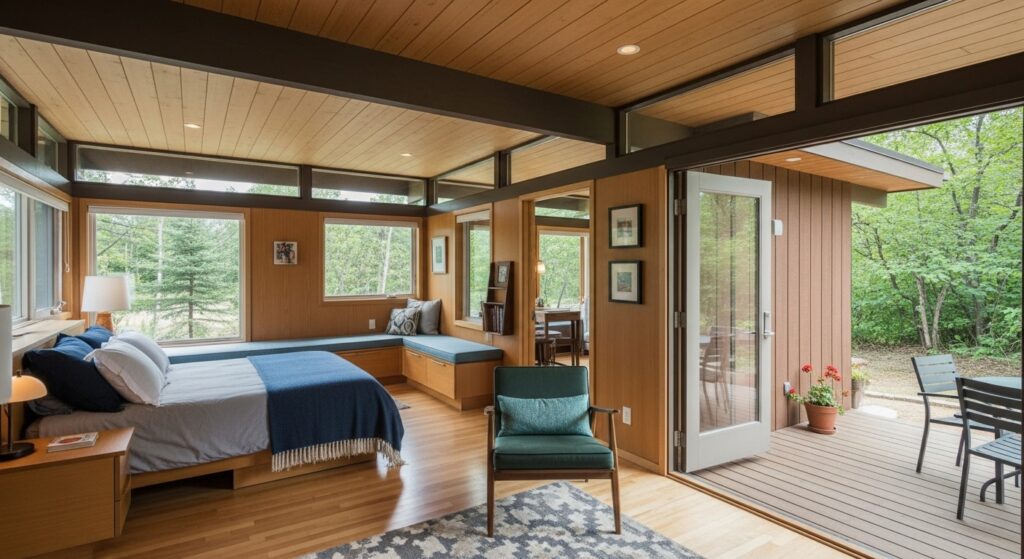
For many, the dream is not a sprawling mansion but a thoughtfully designed, modest home that is both beautiful and easy to maintain. The rise of high-quality, prefab mid century modern homes in smaller sizes (around 1,200-1,800 square feet) meets this growing demand perfectly.
Perfect for Minimalists
This type of home is ideal for minimalists, young couples, or retirees looking to downsize without sacrificing style. The MCM design ethos—uncluttered spaces, functional layouts, and a rejection of needless ornamentation—aligns perfectly with a minimalist lifestyle. An open-concept living area prevents the home from feeling compartmentalized, while large windows and connections to outdoor patios or decks make the home feel larger than its actual square footage. It’s about living smarter, not necessarily bigger, and prioritizing quality design over sheer size.
Design and Functionality
Functionality is at the heart of these smaller homes. Every design choice is intentional. Built-in cabinetry, shelving, and window seats are used to provide ample storage without taking up valuable floor space. A consistent palette of materials throughout the home—for instance, using the same wood for floors, cabinets, and ceiling details—creates a serene and cohesive feel. The layout is carefully considered to maximize natural light and create easy flow between spaces, resulting in a home that is not only beautiful to look at but also incredibly comfortable and practical for everyday living.
Conclusion
Finding Your Ideal Prefab Home
The world of mid century modern prefab homes is vast and exciting. From iconic Eichler-inspired designs to luxurious custom retreats, the possibilities are nearly endless. The journey to finding your ideal home begins with research. Explore the portfolios of different prefab companies across the United States, as each has its own unique style and approach. Consider your budget, your family’s needs, and, most importantly, your building site. The climate and landscape of your property should be a primary inspiration for the design you choose. Many companies offer a range of mid century modern modular home plans that can be customized to perfectly suit your vision.
Future Trends in Prefabricated Housing
The fusion of classic design and modern construction is a trend that is only set to grow. As technology advances, we can expect to see even greater integration of smart home systems and sustainable energy solutions, like home batteries and advanced water recycling, becoming standard features. Innovations in materials and 3D printing may further streamline the modular process, making architect-designed homes even more accessible. The future of housing is efficient, sustainable, and beautifully designed—a future that the mid-century modern prefab home embodies perfectly.

